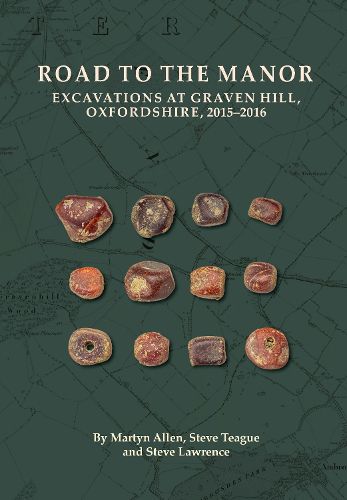Readings Newsletter
Become a Readings Member to make your shopping experience even easier.
Sign in or sign up for free!
You’re not far away from qualifying for FREE standard shipping within Australia
You’ve qualified for FREE standard shipping within Australia
The cart is loading…






Oxford Archaeology undertook a series of excavations in 2015-16 at Graven Hill on the former site of MoD Bicester, a large military storage and distribution centre built during the Second World War. The archaeological works revealed evidence of prehistoric, Roman, medieval and post-medieval activity, as well as finds relating to the use of the military site during the 1940s and 1950s.
Ephemeral signs of early prehistoric activity were limited to stone tools, including an impressive Neolithic axe head, and a Bronze Age cremation burial. The first sign of occupation dated to the middle Iron Age in the form of a small settlement on the northern slope of the hill. A late Iron Age settlement to the north-west appeared to have been abandoned shortly after the Roman invasion, perhaps as a direct consequence of the arrival of the army at Alchester, 1.6km west of Graven Hill. This coincided with the construction of Akeman Street, the alignment of which was discovered to circumnavigate the north side of the hill.
The town of Bicester later originated in the 6th century AD, around the time that a collection of dress and personal items were buried to the north of Graven Hill. A new farmstead was established in the late 11th century, developing in the 13th century with a series of masonry buildings arranged around a central courtyard, linked via a road to the deserted medieval village at Wretchwick. The site is significant for its well-preserved structural foundations and a considerable number of artefacts, including one of the largest medieval pottery assemblages known from rural Oxfordshire. The farmstead was abandoned about the same time as the village in the mid-14th century, perhaps as a result of the Black Death. The land was subsequently used for agriculture until the development of MoD Bicester in the 1940s. Together, the archaeological findings presented in this monograph have enriched our understanding of the history of the Oxfordshire landscape.
$9.00 standard shipping within Australia
FREE standard shipping within Australia for orders over $100.00
Express & International shipping calculated at checkout
Oxford Archaeology undertook a series of excavations in 2015-16 at Graven Hill on the former site of MoD Bicester, a large military storage and distribution centre built during the Second World War. The archaeological works revealed evidence of prehistoric, Roman, medieval and post-medieval activity, as well as finds relating to the use of the military site during the 1940s and 1950s.
Ephemeral signs of early prehistoric activity were limited to stone tools, including an impressive Neolithic axe head, and a Bronze Age cremation burial. The first sign of occupation dated to the middle Iron Age in the form of a small settlement on the northern slope of the hill. A late Iron Age settlement to the north-west appeared to have been abandoned shortly after the Roman invasion, perhaps as a direct consequence of the arrival of the army at Alchester, 1.6km west of Graven Hill. This coincided with the construction of Akeman Street, the alignment of which was discovered to circumnavigate the north side of the hill.
The town of Bicester later originated in the 6th century AD, around the time that a collection of dress and personal items were buried to the north of Graven Hill. A new farmstead was established in the late 11th century, developing in the 13th century with a series of masonry buildings arranged around a central courtyard, linked via a road to the deserted medieval village at Wretchwick. The site is significant for its well-preserved structural foundations and a considerable number of artefacts, including one of the largest medieval pottery assemblages known from rural Oxfordshire. The farmstead was abandoned about the same time as the village in the mid-14th century, perhaps as a result of the Black Death. The land was subsequently used for agriculture until the development of MoD Bicester in the 1940s. Together, the archaeological findings presented in this monograph have enriched our understanding of the history of the Oxfordshire landscape.